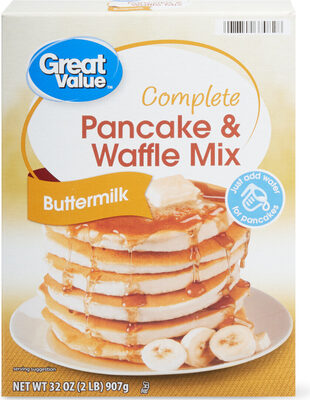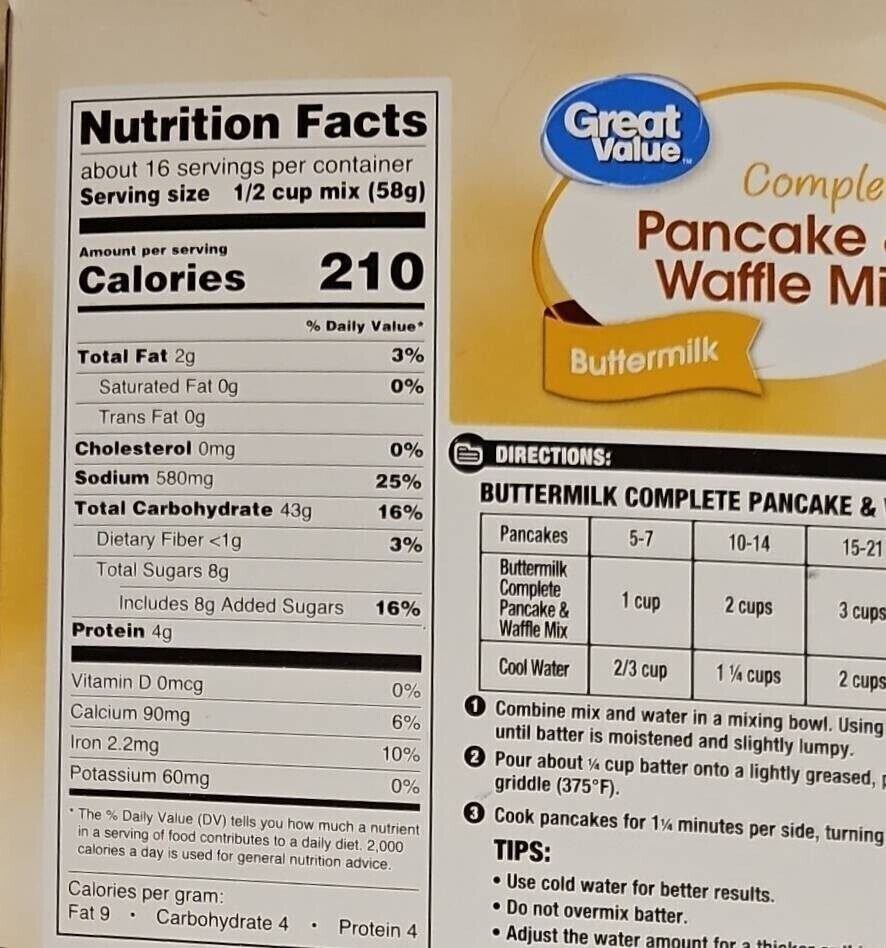Complete pancake & waffle mix - Great Value - 32 oz
This product page is not complete. You can help to complete it by editing it and adding more data from the photos we have, or by taking more photos using the app for Android or iPhone/iPad. Thank you!
×
Barra-kodea: 0078742370828 (EAN / EAN-13) 078742370828 (UPC / UPC-A)
Kopurua: 32 oz
Markak: Great Value
Brand owner: Wal-Mart Stores, Inc.
Kategoriak: en:Snacks, en:Sweet snacks, en:Biscuits and cakes, Gozopil, en:Cooking helpers, en:Dessert mixes, en:Pastry helpers, en:Baking Mixes, en:Cake mixes, en:Pancake mixes
Dendak: Walmart
Saltzen diren herrialdeak: Espainia, Ameriketako Estatu Batuak
Matching with your preferences
Ingurumena
Ontziratzea
Transportation
Report a problem
Datuen iturria
Product added on by usda-ndb-import
Last edit of product page on by roboto-app.
Produktuaren orria -gatik editatua acuario, clockwerx, inf, kiliweb, org-app-elcoco, org-database-usda, teolemon, yuka.sY2b0xO6T85zoF3NwEKvlk9dTfT78yLeZxfkp3ak4cqWK77PUM106IffOKs.






